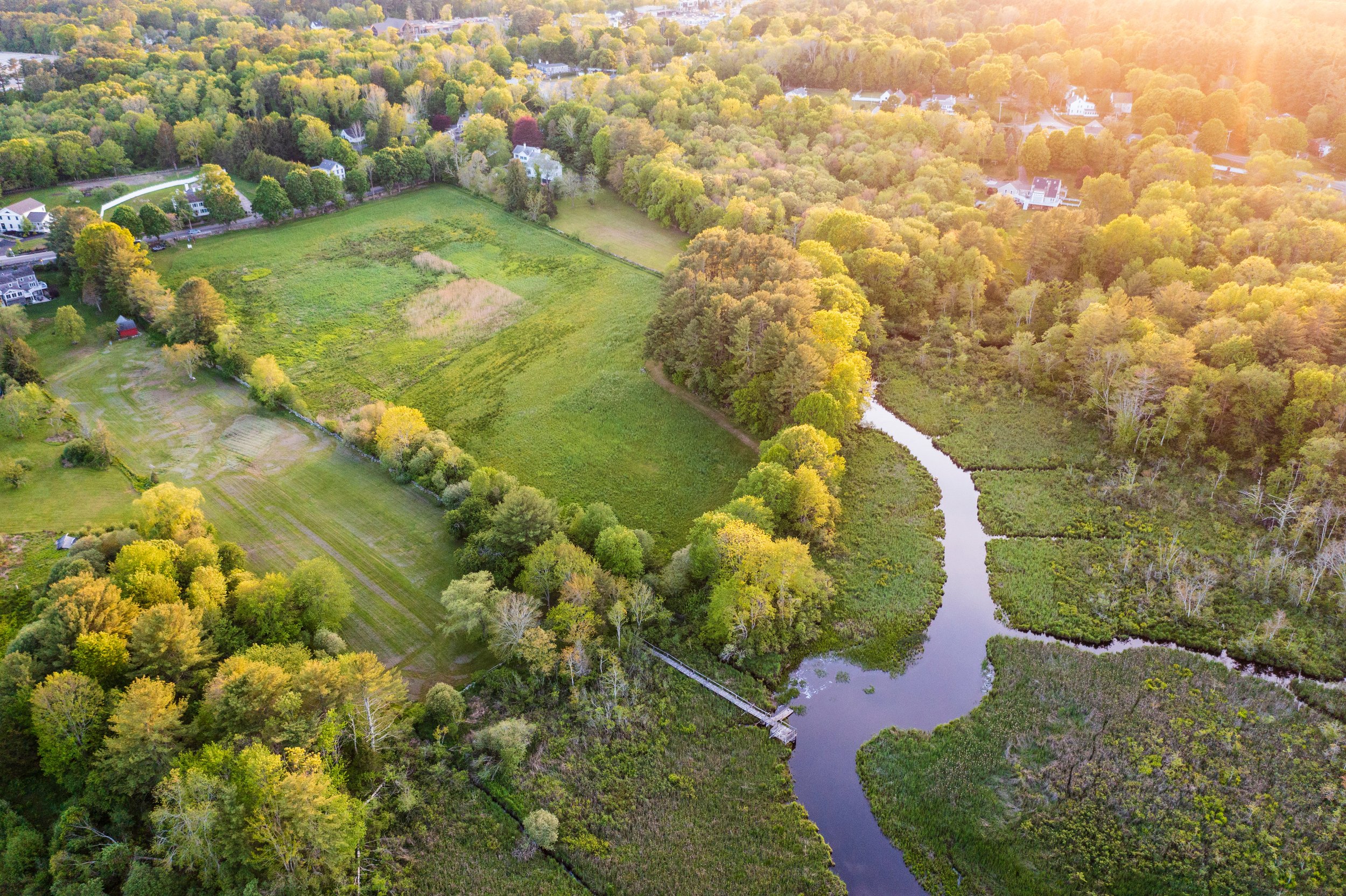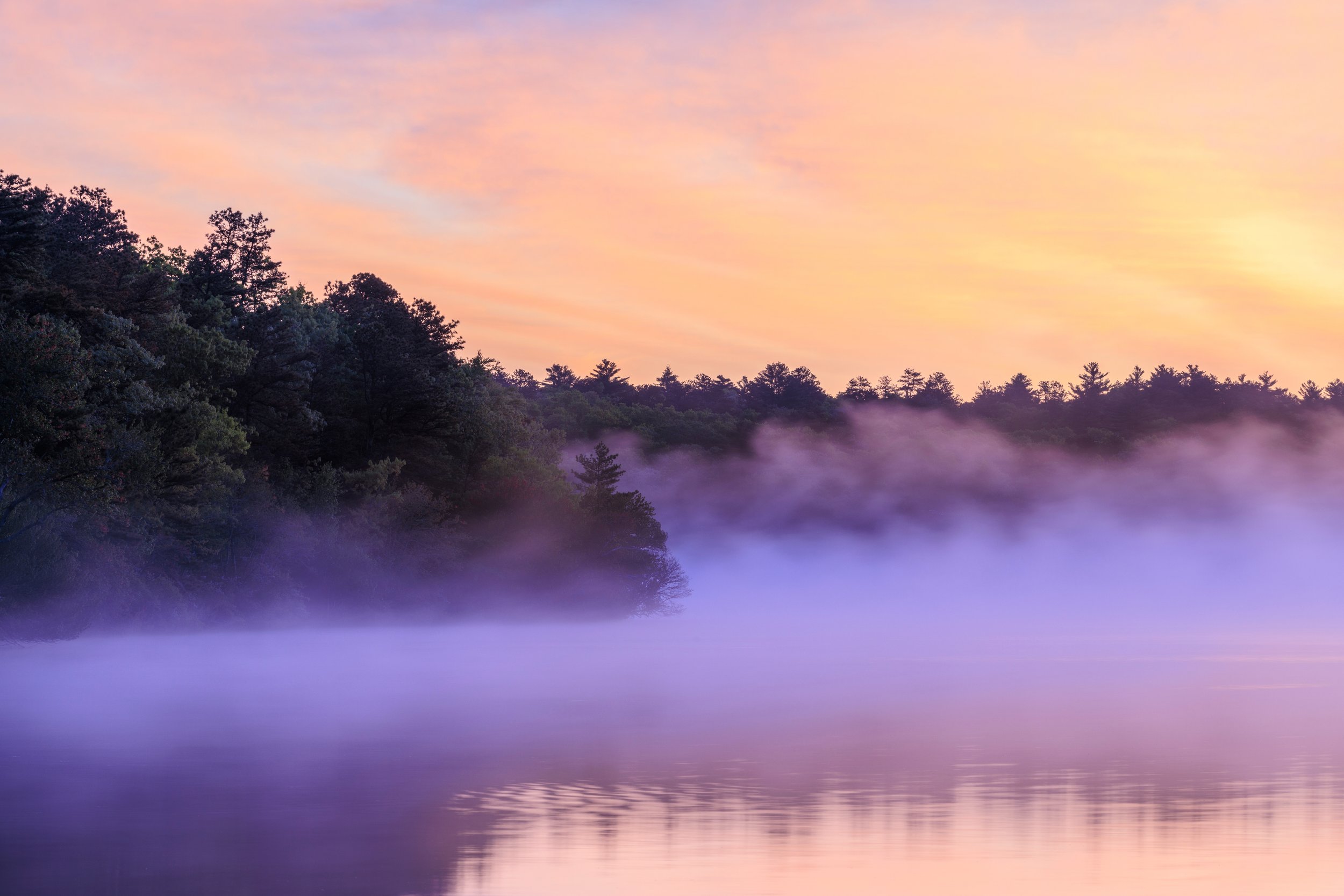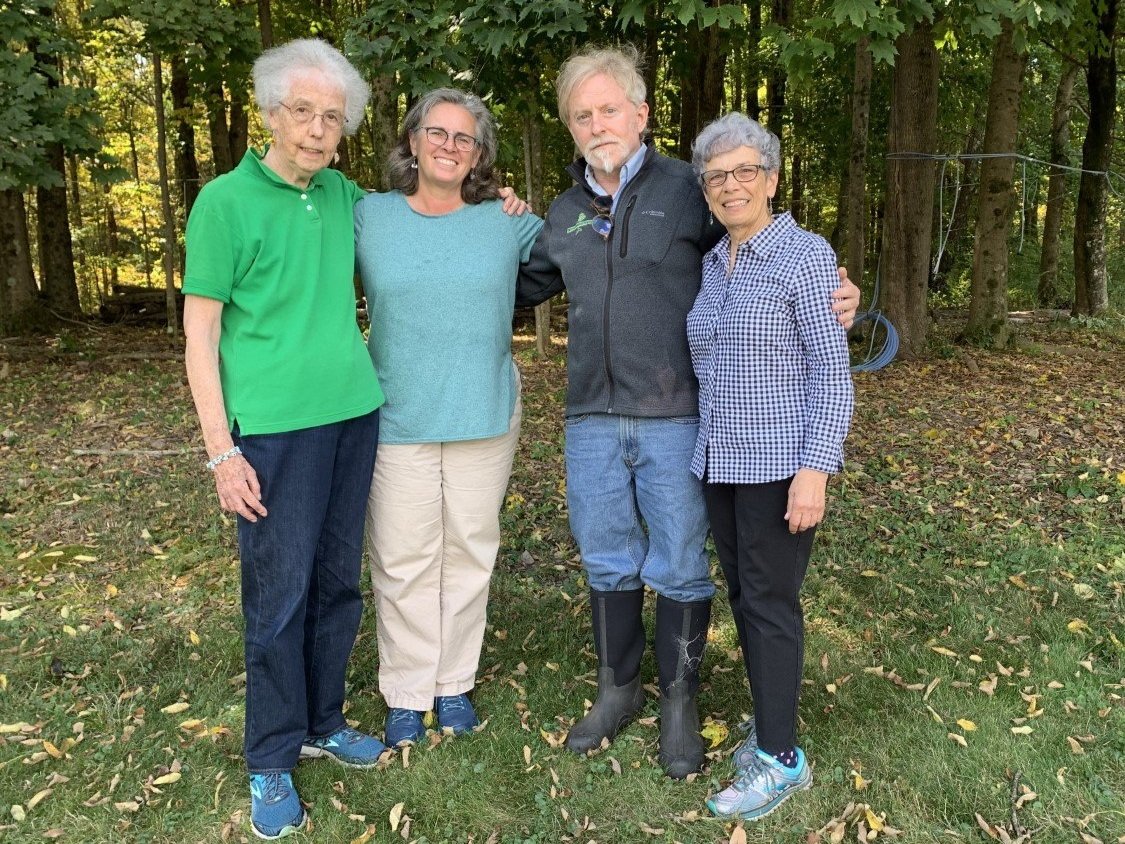From left: Sister Chris Loughlin, Wildlands President Karen Grey, Wildlands Director of Land Protection Scott MacFaden, and Sister Barbara Harrington.
By Skip Stuck, Key Volunteer
On May 6,1949, Sister Bernardine wrote a letter to Mother Margaret Elizabeth of the religious order of the Dominican Sisters. It starts: "Dear Mother, I am really much too excited to write... We have just returned from visiting and touring the grounds. Mother, do please come up to see the place. I can't do justice in writing about it, but I'll try." Sister Bernardine was writing about the property we now know as Crystal Spring Preserve in Plainville. Her excitement runs through the nearly three-page letter, in which she praises the property’s beauty and marvels at the opportunity it presents the order to fulfill its educational and spiritual mission. The next day, the property owners, the Toner family, began drawing up the papers to transfer the land to the Dominican Sisters.
Although the human history of Crystal Spring Preserve certainly does not begin here, perhaps its spiritual history does.
Plainville: Natural & cultural history
Grandfather Rock, a glacial erratic boulder at Crystal Spring Preserve. Photo by Rob MacDonald.
The town of Plainville, like all of Southeastern Massachusetts, was covered by ice and snow during the last glaciation that ended about 12,000 years ago. A prominent reminder of this period is a large glacial erratic boulder on the Crystal Spring property known as "Grandfather Rock." The retreating ice revealed land with few glacial deposits aside from moraines and kettle ponds to the south and east, and rather thinner soil and more scraped and exposed bedrock. Nonetheless, the area was soon settled by early Native peoples who followed the ice sheet's northward retreat, hunting and foraging on the newly exposed land. When first noted by Western settlers in the early 1600s, the Plainville area was inhabited by the Wampanoag people but lay close to the home territories of neighboring Narraganset and Nipmuc tribes.
Near Crystal Spring Preserve is a feature known as the "Angle Tree." European settlement of our region started in the early 1600s with the founding of Plymouth Colony. Shortly thereafter, the Massachusetts Bay Colony was founded to the north. Despite sharing a homeland, the two colonies remained separate and somewhat culturally distinct for the next century, with the Angle Tree providing an important border landmark.
Crystal Spring: A spiritual oasis
Meadow at Crystal Spring Preserve. Photo by Jerry Monkman.
Crystal Spring, named after the dependable and clean local water supply, was farmed for the next 200 years, into the early 20th century. It was known for its lush pastures, feeding cattle, sheep, and horses, but also for its apple, peach, pear, and crabapple orchards comprising over 750 trees. By the 1940s, the property included 84 acres of mixed woodlands and fields.
In 1949, Sister Bernardine and other Dominican Sisters of Peace saw Crystal Spring as a gateway to a better appreciation of the value of human interaction and spirituality with nature. In 1998, under the leadership of Sister Chris Loughlin, the property was renamed to the Crystal Spring Center for Ecology, Spirituality, and Earth Education. Among other activities, the Center opened an elementary school, provided support to homeschooling programs, established a women's justice center, and operated a summer camp. They built and maintained trails and other outdoor features to illustrate the value of our lives in concert with nature. One of the most impressive is the "Cosmic Walk," a spiral of stones in a trailside forest clearing that traces the history of the universe from its beginning to the present time. (Talk about History!)
Cosmic Walk stone spiral at Crystal Spring Preserve. Photo by Rob MacDonald.
Along the way, the Center became deeply concerned with wildland preservation—not only relating to their own lands, but to those of religious communities across the nation. Sister Chris was instrumental in the creation of the Religious Lands Conservancy, in partnership with the Massachusetts Land Trust Coalition, which has grown beyond Massachusetts to assist religious communities in New York, Idaho, Indiana, Kentucky, New Hampshire, Connecticut, and Louisiana in protecting their properties.
In the early 2000s, concern from Sister Chris, Center board member Kathy McGrath, Sister Barbara Harrington, and others over the future of the Crystal Spring property prompted them to initiate discussions with Wildlands Trust. In 2008, the Center granted a Conservation Restriction (CR) on the remaining 33.5 acres to Wildlands Trust, protecting most of the campus. In 2023, the property was donated outright to Wildlands Trust, creating Crystal Spring Preserve. The Attleboro Land Trust accepted the CR to facilitate this transfer. Enhanced trails, a new kiosk, and improved parking herald the preserve’s public opening ceremony this November. The Trust is committed to ensuring that the sisters' dream and vision will continue in perpetuity.
Crystal Spring Preserve. Photo by Jerry Monkman.
Learn More
Please visit wildlandstrust.org/crystal-spring-preserve to learn more about Crystal Spring Preserve, including directions and parking.
A special thanks to Sister Barbara Harrington, who has been an amazing resource in the development of this history. She provided us with invaluable primary resources related to the history and operation of the Crystal Spring Center, including the May 6, 1949, letter from Sister Bernardine; letters from Crystal Spring summer campers; a teaching pamphlet about the Cosmic Walk; and the Center newsletter, “Streams.”
A final thanks to the Plainville Historical Society for research support.












